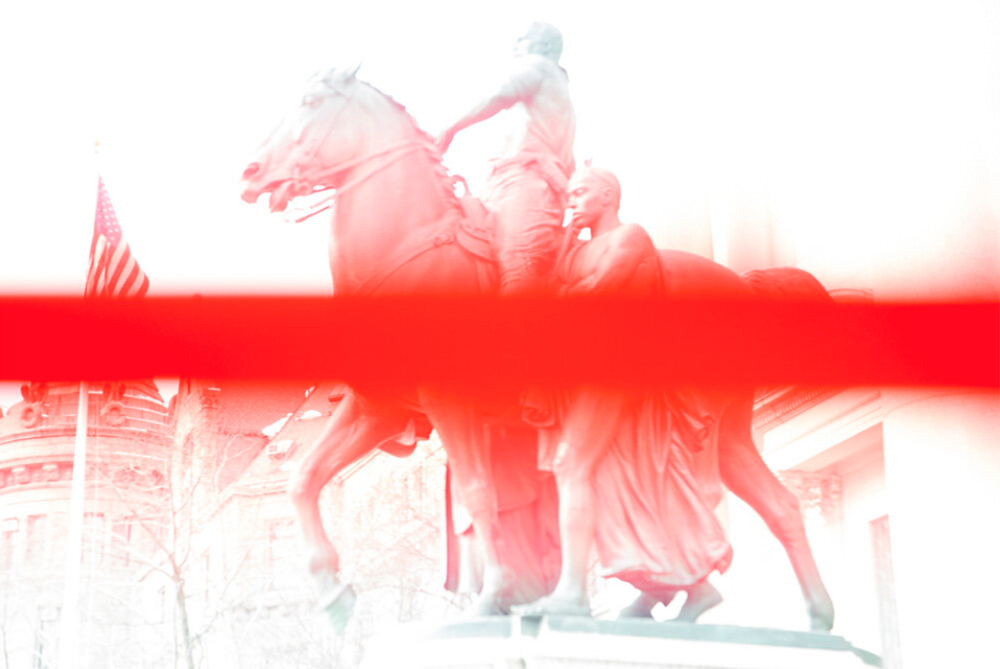Talk: Photography and Racial Justice: Honoring the Work of Maurice Berger
Maurice Berger, 2019 © Seher Sikander, Courtesy Marvin Heiferman
Text by George Russell
Photography and Racial Justice: Honoring the Work of Maurice Berger — a tribute to the late academic, author, and critic—was recently hosted by MFA Photography, Video and Related Media of the School of Visual Arts, roughly a year after his untimely death from COVID-19. The event seemed well tailored to the man and his values. It wasn’t a tribute in the traditional sense of a memorial or a posthumous retrospective, but a presentation of the work of like-minded friends and peers, carrying on the long fight towards truth and justice. This was an event of remembrance, of Berger himself and of history. It seems fitting that a tribute to his legacy would be one focused on continuing his and his colleagues’ shared project of exposing and rewriting racist histories. Dr. Deborah Willis, Brian Palmer, and Nona Faustine formed a panel of experts—scholars and practitioners of photographic historiography—speaking poignantly of Berger as a person and as an irreplaceably influential player in his field. Berger is survived by his husband, writer and curator Marvin Heiferman, who was instrumental in organizing the event.
Land of Freedoms Heaven, 2019, Silkscreen, 40 x 60 inches © Nona Faustine, Courtesy Two Palms
The panelists, all renowned Black artists and intellectuals, spoke about their recent and current work furthering social justice through art and scholarship, and the many ways in which Berger collaborated in this cause. Dr. Deborah Willis, chair of the photography department at NYU’s Tisch School of Art presented selections from her book The Black Civil War Soldier: A Visual History of Conflict and Citizenship. Award winning artist and photojournalist Brian Palmer spoke on his ongoing project studying, documenting, and preserving historic Black churches and cemeteries—a fascinating look into the way history can be distorted and hidden by those in power and a roadmap for recovering that history. Nona Faustine’s fiercely political, sometimes performative series My Country (currently on display at the Andy Warhol Museum) and White Shoes pull the injustices of the past from their hiding places in the modern fabric of a whitewashed country. All gave touching testimonies to Berger’s character and the importance of his work—unflinchingly, compassionately examining social justice issues. Sometimes choking up, the panelists painted a glowing portrait of a committed advocate, unafraid to take a hard look in the mirror, and a warm, hospitable friend.
In Praise of Famous Men No More, 2019, Silkscreen, 40 x 60 inches © Nona Faustine, Courtesy Two Palms
The author of the books White Lies: Race and the Myths of Whiteness and For All the World to See: Visual Culture and the Struggle for Civil Rights, as well as innumerable pieces in a wide range of publications, Berger strove to write honestly about race and speak truth to power even when it meant making himself vulnerable. As Nona Faustine put it: He was unafraid to accept… the realities. I don’t know if I’ll ever meet another… white person like him. He was willing to take punishment, if necessary, to speak his mind and say what was right. So, when I heard that he died I felt like we needed him so badly—who will take up that torch?” There is no doubt that the world of art criticism, history, and social theory are left immitigably poorer for the loss of this understated heavyweight. Berger’s work, though, will continue to stir and galvanize to reflection and action—this is not the end of Berger’s wake—of either his remembrance or the waves he trails behind him.
08 July 2020 — Richmond, VA — Crew removes Confederate Soldiers and Sailors monument from its plinth in Libby Hill. © Brian Palmer
Brian Palmer’s thoughts in closing out the discussion spoke to the fact that, though Berger is gone, he lives on in the continuing project of justice that he devoted his professional life to, and in the body of work that he leaves behind. Palmer said: “I didn’t know the real Maurice until reading him; I saw the warmth, I saw the empathy, but I didn’t understand the courage until reading him. I know that I can, in some way, grow closer and learn more about him and learn from him by reading… by doing him that honor, which he deserves.” I hope, too, that anyone who didn’t know Maurice Berger as a public intellectual the way they would have liked (like me) can still do the same and perhaps put his knowledge and perspective towards chipping away at the wrongs of our society.
04 June 2020 — Richmond, VA — Protest in the wake of killing by Minneapolis, MN, police of George Floyd beginning in Monroe Park, culminating in face off at Richmond Police Department Fourth Precinct on Chamberlayne Avenue. © Brian Palmer












